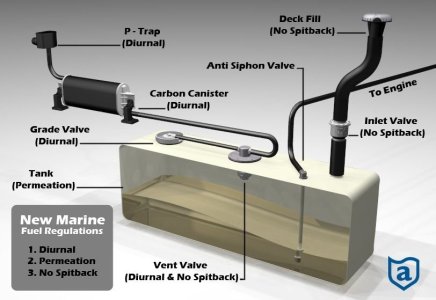The issue that most boats will have with a charcoal filter on the vent line is this:
The filler pipe is the highest point in the system, and the charcoal filter on the vent line is located signficantly lower (As shown in the diagram below). If you fill your system at a pump to the point where the pump clicks off (like you would in a vehicle), you have fully filled not only the tank, but also the filler neck pipe, the vent pipe and the charcoal filter. Once the charcoal filter is fully saturated with fuel it doesn't vent until it drains itself out and dries.
In a car, the charcoal filter is located just above the max fill point. Next time you are filling your vehicle, look at the gas cap or cover - it will usually have a sticker saying 'DO NOT TOP UP TANK'. The reason they put this sticker there is because if you do top up the tank, you have likely flooded the charcoal filter - which prevents the tank from properly venting, and can affect fuel flow.
The main point is - don't overfill your tank. Fill based on fuel sender gauge. Do not fill to the point where the pump clicks off.


